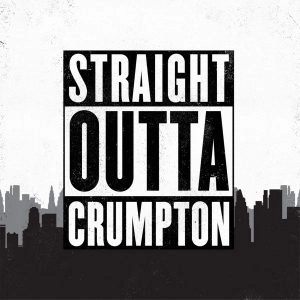What is 3D Modeling and Design? A Beginners Guide to 3D
What You Need to Get Started With 3D Modeling and Design
Whether you’re looking at 3D modeling as a new hobby, you’ve discovered its potential value and want to add the process to your business workflow, or you’re just trying to learn a new skill, there are a few things you’ll need before getting started.
In this article, we highlight the tools, software and technology you need to start 3D modeling. Also, we’ll touch on the educational and/or on-the-job training required to take your modeling skillset to the level of an effective full-time 3D Modeler.
No matter what your end-use, budget or goal for 3D modeling is, after reading this you’ll have a better idea of where and how to get started.
But first, a short explanation of what it is, and some of the potential uses for 3D modeling.
What is 3D Modeling?
3D modeling is the creation of a three-dimensional object inside of simulated software. The object can be created from simple shapes all the way up to complex high-polygon models. A polygon is one triangle, and It takes many triangles to make a circle or complex object.
Often—and depending on the format of modeling you’re trying to achieve—real-world objects are scanned into the software through a 3D-scanning device; then, those objects are used as digital tracing paper to create the final model using the same process mentioned above. Once created, these objects can be scaled and manipulated however the user sees fit.
Uses for 3D Modeling
Some of the industries where 3D is heavily used, to name a few:
- Film/TV – Used to create CGI characters, objects, environments, animations and titling for movies and commercials
- Video Game Development – Used to create the entire visual 3D component of the game with many aspects of animation being the same process as used in Film/TV.
- Architecture – Used to create interactive renderings of buildings and structures; the vast majority of all architectural items are created via 3D CAD modeling for real-life construction.
- Engineering – Creation of to-scale designs to then be produced in a CNC environment and/or via a more manual, hands-on method of fabrication.
While these industries are some of the most common users of 3D, a use for 3D modeling can be found in almost any industry.
Now, on to what you need to get started.
3D-Capable Computer
An often-overlooked aspect of 3D modeling is the computer that you use. A run-of-the-mill computer may not be able to handle the processing power that running 3D software takes. Computing power is the basis behind the ability to effectively model high-polygon models and scenes within the platform.
Robust GPU, CPU and memory, as well storage space and proper system architecture are key factors for the system to perform its tasks—factors that drive the cost of the needed computer up drastically from that of a workstation or high-end gaming system.
Of course, the computer you select will depend on your end-use—one can start the process and find the limitations of their system through using it. If you’re working with huge files—and a lot of them—you may want to consider an upgrade. Only you know the answer. However, at a MINIMUM, your computer should have the following specs to efficiently handle the task of 3D modeling:
| Operating System | Windows 8/Windows 10 64-bit or higher |
| Processor | Multi-Core, Intel or AMD, minimum 64-bit |
| RAM | 16GB minimum |
| Disk Space | 500GB minimum – 1TB recommended |
| GPU |
|
3D Software Choice
Now that you have a computer capable of working with 3D software, it’s time to choose the 3D design software that’s best for you. Depending on your budget, there’s a range of options from which to choose. If you’re an individual or company looking to jump head-first into the 3D space—maybe you plan on hiring an experienced 3D designer or already have one on staff—we’ll recommend more advanced options. However, if you’re a beginner just learning the ways of 3D, there are many free and cost-effective options available, too.
Advanced
Your software choice depends on the end-use of the files you create. Each software has different core functionalities and purposes. Broadly speaking, 3D software typically falls into one of two categories: engineering or artistic. We’ll highlight two common 3D software programs that each focus on one of these two categories. For a broad and comprehensive list of 3D software, check out all3dp.com’s list.
Autodesk 3Ds Max – Artistic
This 3D modeling software is an industry-standard in the creation of film, TV and video game production. 3Ds Max is a powerful software offering features such as 3D modeling, texturing and effects, 3D animations and dynamics and 3D rendering. The plans for 3Ds Max start at about $1,500/year. And if you’re a student or educator, you may even be able to get the software for free.
SOLIDWORKS – Engineering
SOLIDWORKS is a comprehensive 3D software that helps streamline product development and manufacturing. The software is multi-faceted and gives users across a myriad of industries the ability to design entire projects—from buildings to machinery—and simulate product functionality inside of the software. Pricing for SOLIDWORKS starts at $3,995 for one permanent license, or $1,295 for an annual subscription.
Beginner
A cloud-based software provided by Autodesk that is completely free to use, Tinkercad provides users a simple avenue to start…well, tinkering in the 3D space. The Tinkercad software allows you to create and combine basic objects into nearly any final form you can imagine, while also offering users the ability to 3D print their creations as well. Overall, if you are totally new to 3D, Tinkercad is a great tool to help shorten your learning curve.
Blender is an open-source 3D suite that offers users free downloadable software. The platform has a wide range of 3D features—modeling, sculpting, animation, rendering and more—all for free. If you’re a beginner in 3D, a blossoming intermediary or a seasoned professional, Blender has something to offer for everyone.
Education/Training
Most advanced or professional modelers have a four-year degree from an Art Institute or mainstream university, and will then intern or apprentice with a company or artist for a few years to gain the on-the-job training and know-how needed to turn it into a career opportunity.
This doesn’t mean you can’t teach yourself. Several members of our design team don’t have a college degree in the specialty, but have spent the last seventeen or more years honing their skillset and have worked on multiple commercial media productions.
There is a wide array of training materials one can watch and use to begin the learning process and start enjoying the creative aspects of 3D Modeling.
For Engineering-based modeling and product creation, most, if not all, have an eight-year engineering degree—a prerequisite to getting a job as an engineer. So, this level of modeling isn’t commonly self-taught.
Transhield and 3D Modeling
Transhield uses 3D modeling to create their one-of-kind equipment coverings. As explained in this short podcast, before 3D modeling, designers at Transhield had to rely solely on measurements taken by hand—both a labor- and time-intensive process.
Today, Transhield engineers utilize 3D scanning technology to create a custom-fit cover to fit the largest and most uniquely shaped objects and equipment—resulting in precise, superior protection via technology that saves both time and money.
Are you interested in learning more? Visit their website and click Our Solutions to see how different industries—marine, industrial, wind energy, aviation, HVAC—are teaming up with Transhield to protect their most valuable assets.
—








